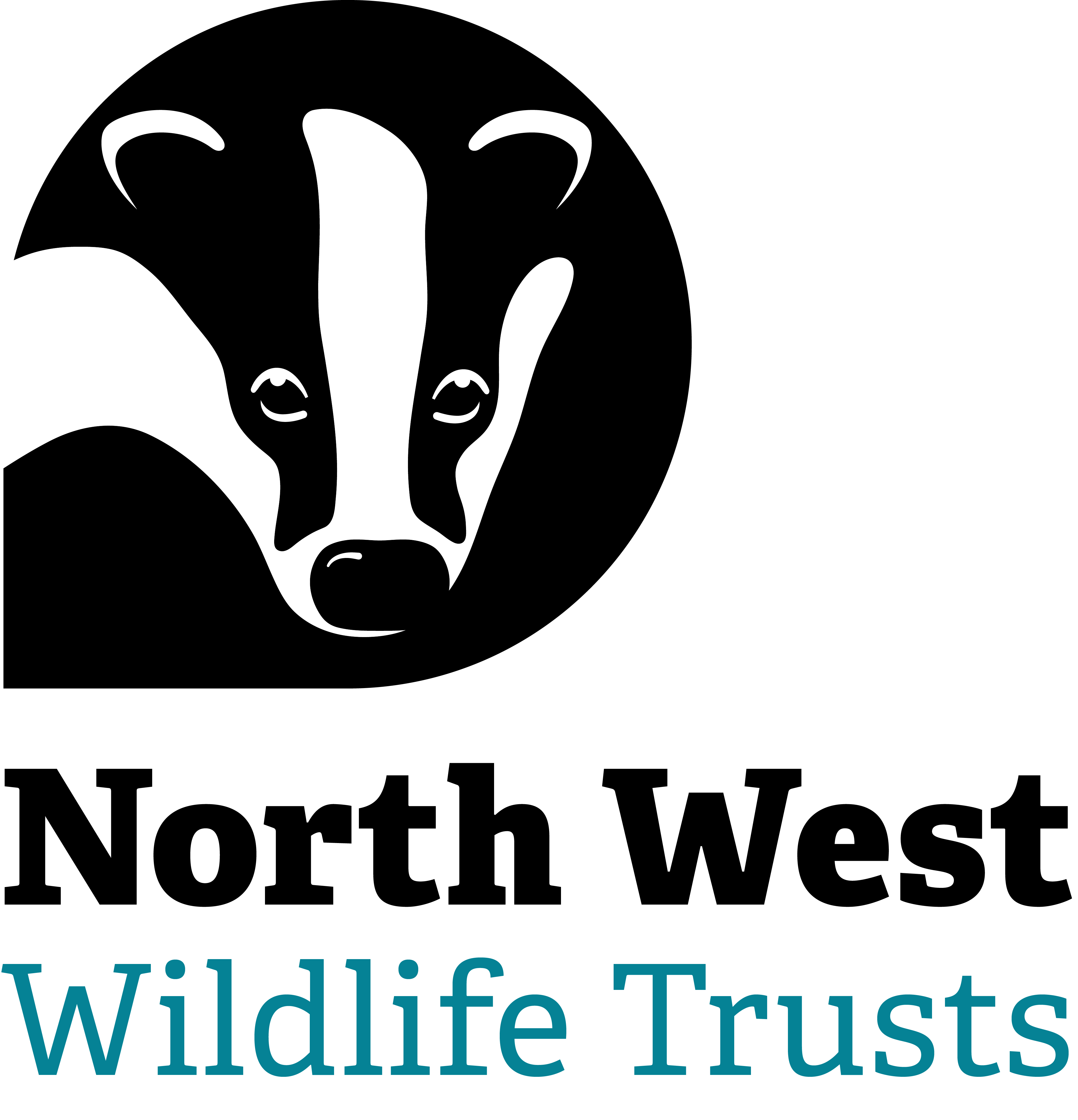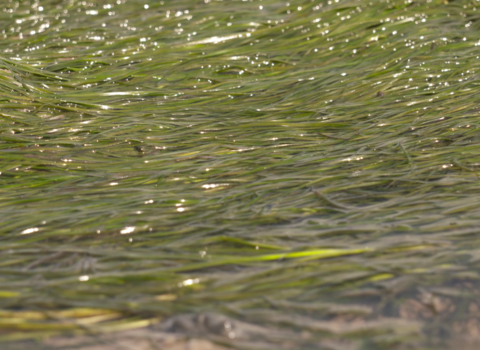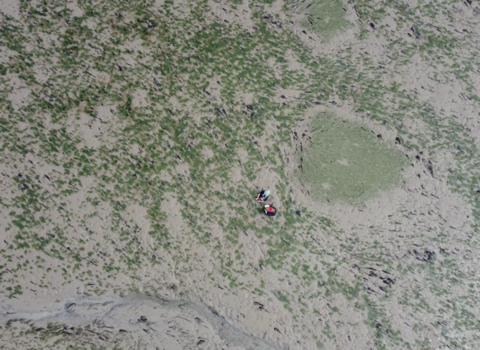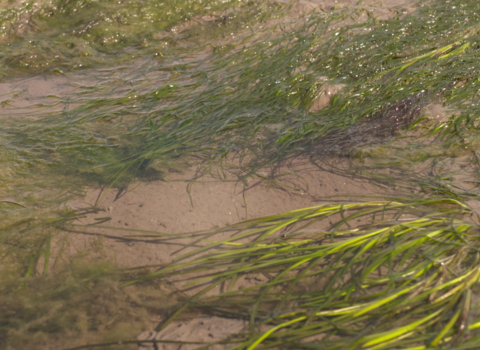Did you know we have seagrass in Cumbria?
Seagrass is a marine plant that can form dense underwater beds in our coastal waters, providing a home for numerous species and several benefits to coastal wildlife, the planet and us. Sadly, seagrass meadows have faced serious declines worldwide and pollution, disease and coastal development have all prevented seagrass thriving in our waters. However, we still have time to turn things around!
Thanks to funding from Ozone and the Environment Agency, seagrass restoration work will begin this summer, in an effort to bring back the seagrass beds in the Walney Channel. Keep an eye on this page to hear more about seagrass, why it’s important, and what we’re doing to restore it in the North West.
Why is seagrass important?
A home for wildlife
Seagrass is not just a plant – it’s also a habitat! Its blades can be home to epiphytes (creatures that make their homes on plants), and also provide shelter to young fish seeking refuge from predators. When seagrass is dense, it slows water currents, allowing nutrients to settle which attracts more wildlife that can live in and feed on the nutrient-dense sediments. Wintering birds will also be seen at low tide on seagrass beds, either feeding on the seagrass itself or the creatures living in the mud and sand gathered by the plants.
Protection from erosion
The roots of seagrass hold onto the mud, sand or gravel that the plant is growing in. This helps to stabilise the sediment, so when strong waves rush in, less of the seabed will be washed away. This helps to stabilise and defend the coastline, bolstering it from erosion and creating a “buffer zone” to strong waves, absorbing their energy and protecting our coastal communities from flooding and storm damage.
A natural solution to climate change
Seagrass draws carbon out of the atmosphere in the form of carbon dioxide, and converts it into the building blocks of its cells. As parts of the plant die and are replaced by new shoots and leaves, the dead material collects on the seafloor along with organic matter (carbon) from other dead organisms. This material builds up forming layers of seagrass sediment, which if left undisturbed, can store carbon in the seafloor for thousands of years. The roots of the plant trap more sediment and allow more of this matter to build up, making seagrass an incredibly important natural solution to the climate crisis.
A wasting disease in the 1930s caused a drastic decline in seagrass meadows across the UK. Since then, any recovery of seagrass beds has been hampered by increased levels of pollution, physical disturbance from dredging, use of mobile fishing gear and coastal development.
Sewage discharge high in nutrients is extremely toxic to seagrass, but it also acts to stimulate algae growth which can outcompete the seagrass by reducing the available sunlight. The ability of seagrass to reduce the speed of currents can result in pollutants accumulating in the seagrass bed. Several heavy metals have been found to reduce the plant's ability to fix nitrogen, reducing its ability to survive.
Globally, 30,000km2 of seagrass has been lost in the last couple of decades - about 18% of the global area. The UK has lost approximately 90% of its seagrass meadows, half of which has been lost in the past 3 decades. In Cumbria, that figure stands at about 70% - meaning a significant majority of our seagrass has been lost and is in need of recovery.
We have been monitoring the seagrass beds in the Walney Channel since 2021, looking at both their extent and the condition of the seagrass within them. We’ve also been looking at how many seeds the plants are producing, to see whether some of these seeds can be used to grow a new meadow in a part of the channel where seagrass used to exist.
This year, we will be undertaking studies to understand much more about the site where seagrass used to exist, and whether it is suitable for seagrass to grow there again. We’ll be looking at the nutrient levels at the site, the tidal dynamics, the carbon content and the biodiversity of both the areas with seagrass and those without, to see how they differ.
As the summer comes and the seagrass grows, we’ll continue to monitor its extent and condition. We will be collecting seeds once they appear and storing them over the winter, trialling different planting methods to understand which method works best for our patch. We are hoping that this time next year, we will be able to see new growth in the area, and in time will be able to scale up seagrass restoration to bring back some of the lost meadows to the Walney Channel.
How can I help?
Volunteer with us
As the project progresses, we’re hoping to involve as many people as possible in the replanting efforts. This will likely come in the later, scaling up phases of the project. To help us continue to survey and monitor our coastline, you can join us on our marine survey days which run on the coast each month. Keep an eye on the volunteer page for any new opportunities to volunteer with us, as well as the events page for events taking place later this year on the coast!
Support us
You can support our work by donating to the Living Seas programme, to directly contribute to the work that we do on the coast. You could also become a member of Cumbria Wildlife Trust, joining the 15,000 people who are helping us to take action for wildlife across the county.
Learn, experience and spread the word
Visit and experience your coastline, join us on events and talks about the Irish Sea and the wonderful life within it, find the parts of the natural world that resonate with you and share that with the people around you – family, friends and those who make decisions about how our natural world is treated. Bringing nature back is something that everyone can help with, and that starts with getting out there and seeing how wonderful it is for yourself!
Previous seagrass research in Cumbria
- Seagrass Extent, Coverage and Condition in Cumbria (2023) (https://www.livingseasnw.org.uk/sites/default/files/2024-01/Seagrass%20Surveys%202023-%20Extent%2C%20Coverage%20and%20Condition.pdf)
- Potential Seed Bank Use from Beds at Roa Island (2022) (https://www.livingseasnw.org.uk/sites/default/files/2023-01/Distribution%2C%20Extent%2C%20Condition%20and%20Potential%20Seed%20Bank%20Use%20of%20Zostera%20noltii%20Beds%20at%20Roa%20Island%2C%20Cumbria%2C%20UK_0.pdf)
- Extent and Condition of Zostera noltii in the Ravenglass Estuary (2022) (https://www.livingseasnw.org.uk/sites/default/files/2023-01/Distribution%2C%20Extent%2C%20Condition%20and%20Potential%20Seed%20Bank%20Use%20of%20Zostera%20noltii%20Beds%20at%20Roa%20Island%2C%20Cumbria%2C%20UK_0.pdf)
- Seagrass Restoration Potential in Morecambe Bay (2021) (https://www.livingseasnw.org.uk/sites/default/files/2022-02/Report%20-%20Seagrass%20Restoration%20Project%20-%20Marine%20Futures%20v1%20PDF.pdf)



